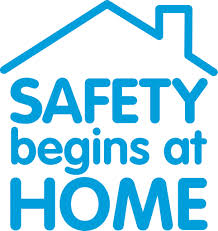By Steve Bills
When people talk about safety in the health care field, many people
immediately think about hospital safety, but there is another facet of health care to consider—home health care. Home health workers provide hands-on, long-term care and personal assistance to people with disabilities or other chronic conditions in the clients’ homes.
These health professionals include personal aides, nursing assistants or home health nurses, who either work directly for their clients or for an agency or business that sets up appointments and visits. Because of the varied work environments in clients’ homes, there are multiple workplace hazards to which home health care workers may be exposed.
As the number of home health workers increases, the chances of injury also increase. In November 2011, the U.S. Department of Labor’s Bureau of Labor Statistics released data showing that nonfatal occupational injuries and illnesses for health care support workers increased 6 percent, which is almost two and a half times the rate for all private and public sector workers.
Exposure to Unsafe Conditions
Because these health care professionals work in their clients’ homes, their work environments will vary. Home health workers may encounter homes without water or with extreme temperatures, as well as unsanitary conditions and hostile pets, which are all unsafe conditions.
Unsanitary conditions may cause the presence of rodents or other pests. Those conditions may also cause the contamination of medical supplies and help spread disease and infection. Hostile pets carry the risk of a home health care worker being bitten, feeling threatened or otherwise injured.
It’s important for home health workers to understand what conditions are acceptable for a work environment, as well as when they should remove themselves from such conditions. Home health care workers should be encouraged to talk with supervisors about any unsafe conditions in their clients’ homes, and they should be educated on the process to report such conditions.
Bloodborne Pathogens
The hazard of bloodborne pathogens is not unique to the health care industry, but the potential for a more serious injury is greater. Home health care workers provide support for their clients who are disabled or ill. Those clients often require some medication, which may be in the form of injection. The key is to reduce an employee’s risk of exposure.
Hepatitis B, Hepatitis C and HIV are just some of the more common bloodborne pathogens that home health workers can be exposed to. Exposure may occur through needles, sharp injuries, mucus membranes and skin exposures.
Personal protective equipment, such as gloves or goggles, can help reduce the risk, and should be worn at all times. When home health care workers handle blood or other body fluids, certain protocols should be followed to ensure there is no direct exposure to them. Containers should be completely sealed, and proper medical procedures should be followed.
The Occupational Safety and Health Administration (OSHA) recommends that health care workers are educated on an exposure control plan with details on employee protection measures.
Violence on the Job
A home health care fact card created by the Centers for Disease Control and Prevention notes that these workers are vulnerable because they face changing and unpredictable environments when they go into someone’s home each time. The violence can range from verbal abuse, threats of violence, physical abuse to homicide.
It is important to maintain a zero-tolerance policy for any instance of workplace violence. Any such cases should also be reported immediately.
Home health care workers should know how to identify a potentially dangerous situation, and they should be trained in how to manage hostile and violent situations. If they feel uncomfortable at any time, they should remove themselves from the environment.
Client Lifting and Moving
Due to client lifting and moving, home health care workers may experience work-related musculoskeletal disorders, such as low back pain or rotator cuff injuries. These can be caused by excessive force to the back when lifting a client, the repetition of the movement if it is repeated on a regular basis, or assuming an awkward position when performing these tasks and placing stress on the body.
When moving or assisting clients in movement, several factors should be considered to help determine the proper method in moving the patient:
· The level of assistance the patient requires
· The size and weight of the patient
· The ability of the patient to understand and cooperate
· Any medical conditions that the patient may have
The ultimate solution is to minimize or eliminate the manual lifting of patients when possible.
Motor Vehicle Accidents
An often-overlooked hazard that home health care workers face every day is the travel to and from various patient locations. With most jobs, driving is limited to getting to and from work once a day. For home health care workers, driving can be the most frequent activity they perform each day. Every worker that is required to drive on the job needs to be alert and drive defensively. Vehicles need to be maintained and serviced regularly. Weather and traffic patterns can greatly impact driving safety, and driving practices should be adjusted to the conditions of the roadways.
The more home health care workers are prepared to protect themselves against these hazards, the more productive and safe the environment will be for them and their clients.
About the Author: Steve Bills is Senior Manager of Loss Prevention for Texas Mutual Insurance Company. Austin-based Texas Mutual Insurance Company is the leading provider of workers’ compensation insurance in Texas.





